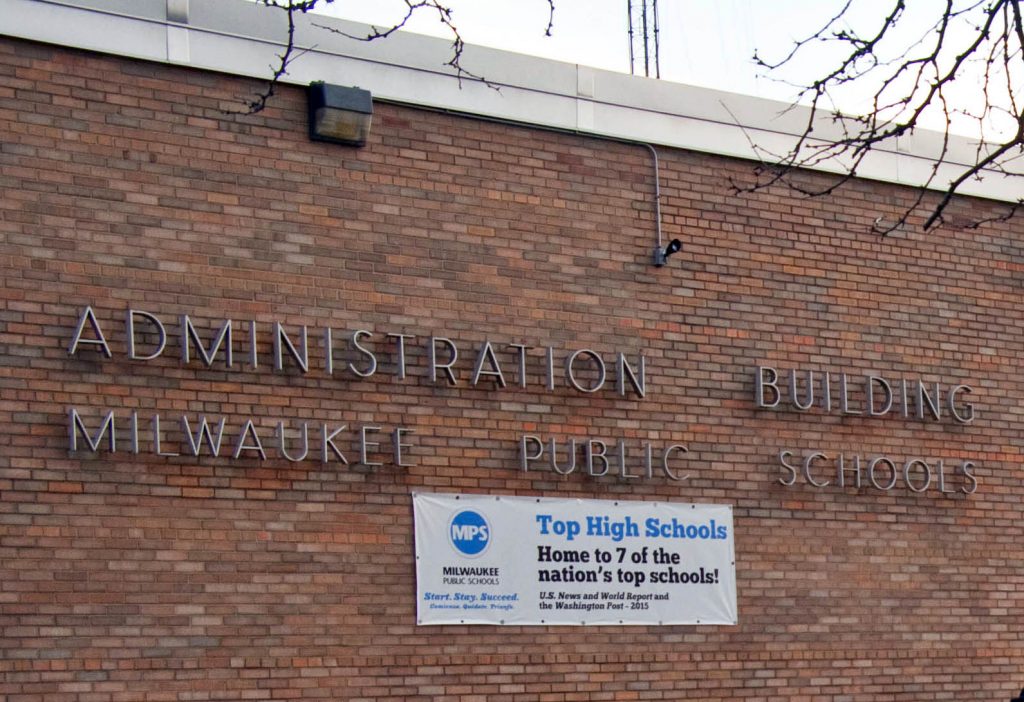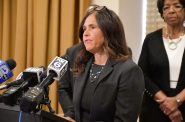New Report Finds Serious Issues With MPS HR Department
The issues are indicative of the district's lack of an identity.

Charles Edward Miller (CC-BY-SA)
Milwaukee Public Schools can’t find enough teachers to staff its classrooms.
While some of its more desirable schools have all the teachers they need, less desirable schools make do with a string of substitutes and over-worked regular staff. In frustration or exhaustion, teachers leave the system to seek opportunities elsewhere.
At the July 31 school board meeting, CGCS Executive Director Ray Hart outlined its latest findings in a presentation.
It is not enough to simply list the 12 new recommendations here. It is more important to try to understand why reform in the district has been so difficult to accomplish.
MPS has had so many twists and turns in its organizational structure in the last 35 years. Milwaukee’s school voucher program was established in 1990. Advocates for vouchers, such as Susan Mitchell, pushed whole sale dismantling of a centralized system when she wrote in 1994, for the conservative Wisconsin Policy Research Institute to shift control from MPS “by allowing parents to choose schools their children attend and providing them the financial resources to do so.”
Then-Superintendent William Andrekopoulos, beginning in 2002, pushed for charter schools, dividing buildings into smaller programs. Concepts like “school-based management” held that large, institutional structures don’t work. Drive decision making to the school level.
Some of these reforms worked, but others failed. Following superintendents inherited a disjointed system heading in two directions at once, not knowing what to centralize and what to decentralize, standing alongside of a growing private school and independent charter school movement competing for students.
The system showed it was broken under Superintendent Keith P. Posley when the district failed to file state enrollment data in a timely manner, leading to Posley’s resignation. The district could not file on time because its computer systems were not integrated with the Wisconsin Department of Public Instruction computer systems. MPS had to hand transfer data from printed spreadsheets taking an inordinate amount of time and compounding errors.
CGSC found similar problems internally with the district’s HR department.
“MPS employs more central office personnel per student than comparison districts. CGCS found that MPS percentage of teachers to students was 40.60% while other large school districts average 46.10%.”
But, some of that is because “OHR personnel reported that manually intensive data entry and other transactional activities account for 40 to 75 percentage of their daily workload, diverting time and effort from higher-value strategic functions and increasing the risk of errors.”
Nor were employees able to get “essential information and self-management functions” through the computer system and were dependent upon asking OHR for information directly.
OHR is narrowly focused on hiring and positioning teachers. It does is not integrated into staff development which is key to maintaining qualified staff and developing them to their full potential. The department must continually hire new teachers while present employees head out the door.
The district, said CGSC, needs to implement “comprehensive employee development, growth, and retention strategies to enhance workforce satisfaction, organizational effectiveness, and employee retention.” Again, CGSC highlighted a fragmented school system.
The hiring of teachers illustrates the district moving in two different directions at once.
On one hand, CGSC stated that MPS relies on principals to do much of the vetting of new teachers, especially student teachers who had shown real potential. On the other hand, these same principals are not authorized to offer contracts without these same candidates going through an extensive central office process. It “results in many top-tier candidates or student teachers being hired by surrounding and in-competition school districts.” The district needs to take back some of the basic clerical vetting, but also give principals some freedom to act.
Years before, when decentralization was the norm, some principals could handle building management decisions, other were best only as instructional leaders. For example, MPS finally decided that it was not a productive use of principal’s time to determine which copy machine they should buy for their schools, let alone expecting that MPS could maintain so many models from different companies. Central administration took back that function.
Every school had its own reading program; whatever the principal thought would work. That was paired down to only a couple. But under the vestiges of school-base management, principals were still responsible for many things in their building beyond teaching and learning.
A MPS instruction review conducted by MGT of America Consulting in June concluded: “The district lacks a clear focus for instructional improvement or a vision for teaching and learning.”
CGCS matches the findings of the MGT report that noted “The current (SY2024-25) regional supervision structure does not prioritize the development of instructional leadership.”
To that end, Cassellius has changed the model for regional superintendents to be mostly instructional leaders letting central administration take care of much of the rest.
Simply listing the 12 recommendations of CGCS, and the findings of MGT plus others, may miss the struggle of a school district trying to establish its identity.
More than any previous superintendent, Cassellius comes to Milwaukee with experience running a large educational organization. She was previously the Minnesota Commissioner of Education, superintendent of Boston public schools, and an administrator and superintendent in other districts.
She now has a roadmap of needed reforms, and a district in need of an identity.
Terry Falk served for years on the Milwaukee school board, and before that on the executive board of the MTEA.
If you think stories like this are important, become a member of Urban Milwaukee and help support real, independent journalism. Plus you get some cool added benefits.
K-12 Education
-
MPS Training in Science of Reading Going Poorly
 Nov 23rd, 2025 by Terry Falk
Nov 23rd, 2025 by Terry Falk
-
The Fear Factor at MPS
 Nov 11th, 2025 by Terry Falk
Nov 11th, 2025 by Terry Falk
-
MPS Reaching Out to Community
 Nov 2nd, 2025 by Terry Falk
Nov 2nd, 2025 by Terry Falk





















One teacher retention issue that has never been looked at closely is why some schools have had high number of teachers leaving the schools and what role the principal’s school culture might have been a factor. Having had the consult with a number of MPS schools, I found that when many new principals took over buildings, they were determined to do what ever they wanted with no input from the faculty. When a school lost many teachers in a school year, Central Services never called the principal in to ask why there were a high number of departures.